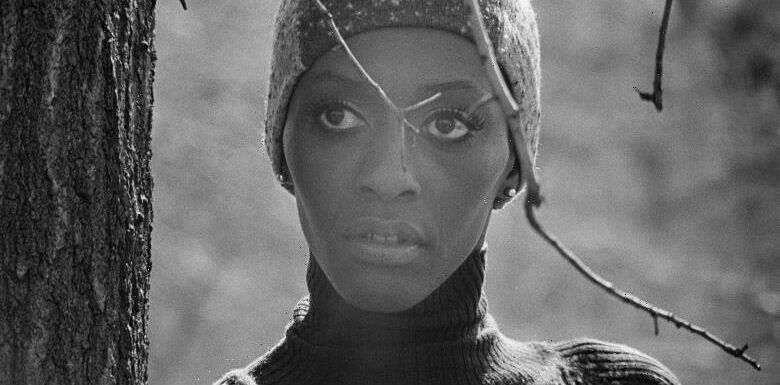
Progress in the face of systemic injustice does not occur naturally, it is urged along by sheer force of will — often by one radical visionary. In the case of the fashion industry’s racism, that person is Bethann Hardison. A trailblazing model in the 1970s, she became one of the most important agents of the ’90s, discovering the first male supermodel Tyson Beckford and mentoring Naomi Campbell and Iman. When fickle trends threatened to erase all of her hard work in the aughts, she boldly called out the industry’s blatantly racist casting practices, causing a seismic shift once and for all.
Hardison’s remarkable and fabulous life serves as an inspiring lesson in affecting radical change from within the system, and her methods can be studied thanks to the riveting new documentary “Invisible Beauty.”
Hardison serves as co-writer and director alongside prolific fashion documentarian Frédéric Tcheng, (“Halston,” “Diana Vreeland: The Eye Has to Travel”). Their presentation is fairly conventional, but there’s so much information to deliver that a straightforward approach feels apt. While it may seem unusual for a documentary subject to profile herself, the mere fact of the collaboration hints at the unstoppable force of nature in its sights.
Besides, Hardison isn’t the kind of established figure who begs a totally subjective portrayal (if such a thing even exists); she’s an unsung hero of the industry who deserves her overdue flowers. As a director, she doesn’t gloss over the more painful aspects of her personal life, such as her somewhat strained relationship with her son, “A Different World” star Kadeem Hardison.
The film opens with a parade of influential figures singing Hardison’s praises: Tracee Ellis Ross, Zendaya, Whoopi Goldberg, and Fran Liebowitz all pop up briefly, though more comprehensive analysis is provided by Iman, Campbell, Beckford, and a host of fashion players. Tcheng shot part of the film himself in intimate visits to Hardison’s upstate abode, and the filmmakers are shown discussing how to present the wealth of material. “It all starts in Bedford Stuyvesant,” says Hardison, before rolling on peppy archival footage from the iconic Brooklyn neighborhood in the 1950s and ’60s.
Though her years with him were marked by strictness, Hardison’s father was an Imam who mentored Malcolm X, and she credits him with radicalizing her. After attending FIT and NYU, she began working as a saleswoman in the garment district, where she caught the eye of emerging Black designer Willi Simpson. Beginning as a fit model, her androgynous look and expressive personality earned her spots on the runways of the ’70s, which she walked alongside Beverly Johnson, Iman, and Pat Cleveland.
Though they were all the rage in New York, Hardison always felt she was “walking into a hostile environment” when modeling for Southern buyers. Crafting her signature defiant walk as a protective shield, she cites Kurosawa films as early influences: “I’d always think of Samurai when I would walk.”
Bethann Hardison, “Invisible Beauty”
Sundance
Galvanized by fashion’s abysmal race politics, Hardison turned to booking and representation to have a wider reach on the industry. She launched the Bethann Management Agency in 1984, and co-founded The Black Girls Coalition with Iman in 1988, both with the aim of supporting African American models. Her agency was known for discovering the most interesting and dynamic models from various backgrounds, including Kimora Lee Simmons, Roshumba, Veronica Webb, and Beckford. Countless interviews with industry insiders emphasize Hardison’s revolutionary impact on the fashion industry in the ’90s.
After Hardison retired to Mexico to plot her next move, however, the industry took a demoralizing backslide into white homogeneity. Led by Prada and Calvin Klein, the prevalence of unknown Eastern European models led to the “heroin chic” look of the early aughts. “Fashion is so stupid,” Hardison taunts. “They’re lemmings.” In 2013, she organized a bombshell press conference calling out the blatant racism that had become industry standard, with casting calls often stipulating, “No blacks, no ethnics.” She followed that up with what became known as “The Shame List,” an accounting of the high profile designers that were guilty of using little to Black models in their runway shows.
The film shares this information at a brisk enough clip, and the runway shows and press conference footage have an air of cultural artifact being defined and preserved in real time. For anyone who wasn’t paying close attention to fashion at the time, it’s an illuminating record of what was going on behind the scenes, and an important reminder of how much media is shaped by the fashion industry. It’s easy enough to draw parallels to the battles for representation playing out in Hollywood, even if the film doesn’t explicitly draw those parallels. It’s a vital reminder of how much the images we ingest, whether intentionally or not, shape our worldview. That’s something Hardison understands all too well.
“My objective was always to change the world, it wasn’t just to change fashion,” Hardison says in the film. “That was just the tool I had.” In her later years, Hardison is enjoying the kind of resurgence befitting her stature. She is still being dressed by fabulous designers, photographed in beautiful clothes, and consulted by fashion’s elite. “Mother is living her best life,” Iman and Campbell joke to each other. For now, she seems content to work on her memoir, and share her story on film. “This moment everyone thinks I’m having,” she muses. “I think being alive is the moment.” Amen.
Grade: B+
“Invisible Beauty” premiered at the 2023 Sundance Film Festival. It is currently seeking distribution.
Source: Read Full Article

